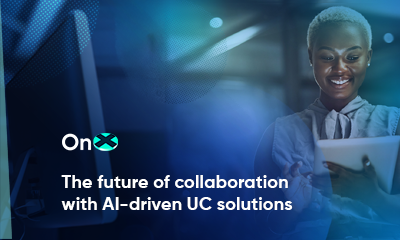
Migrating legacy applications to cloud platforms is a potentially lucrative business strategy but poses substantial risks. McKinsey reports that by 2024, most businesses will dedicate at least 80% of IT budgets to cloud computing. Furthermore, McKinsey predicts companies could tap into more than $1 trillion in value over the coming years by utilizing cloud-based operations.
But McKinsey also found that organizations routinely blow migration budgets by an average of 14%, and 38% of companies are delayed in the application migration process by at least one business quarter.
This blog will review the benefits of migrating vital applications to a cloud environment, how to develop a migration plan, implementation, and the potential pitfalls.
Core benefits of application migration
While cost-effectiveness and savings are compelling reasons to embark on migration projects, other vital benefits include:
- Increased organizational adaptability
- High scalability
- Greater accessibility
- Boosted efficiency
- Enhanced customer experiences
- Lowered IT burdens
- Better service quality
Strategically, a shift to cloud operations for critical applications means that IT expenses once reserved for CapEx can move into OpEx. By transforming into a cloud-first organization, hardware, maintenance, and other costly infrastructure expenses will be significantly reduced.
Also read: Meeting market demand through modernization of legacy technology
Developing a migration strategy
Newcomers to application migration may be overwhelmed by the process. An enterprise must develop a migration plan to find an appropriate starting point and create a realistic budget and timeline. A migration plan is a living document that keeps the process on time, on track, and under budget.
The elements of an effective migration plan
Seek alignment. An application migration project should align with core business objectives. Which applications will generate the most positive impact from moving to the Cloud? More importantly, which applications will move the needle for central organizational goals?
Prioritize. How do you decide which applications to migrate first? After achieving alignment, other factors include:
- Cost: What can your company reasonably afford? How will you stay under budget?
- Workload: How much time, effort, and resources will the migration take for the company and the IT department?
- Tactics: Does it make more sense to start with a low-priority app to break the ice and smooth out the wrinkles of the migration process? Or should you stick with the mission-critical applications first?
Scope. After defining alignment and setting priorities, the next step is to lay down some guidelines for the scope of the project:
- Timeline: To create a reasonable timeline, schedule discovery sessions with the IT department, and outsource expert opinions as needed.
- Milestones: Setting milestones is a powerful method of tracking progress and signaling potential issues.
- Define success: What does the finish line look like for this project? How will you know if the migration was a success or not?
- Minimum viable product: Cloud development allows programmers to utilize continuous deployment. In other words, the migrated application does not need to meet the total wish list of features, at least not at first. Determining the minimum viable product is a helpful standard that guides the core functionality that the application must execute to create value and fulfill its purpose.
- Compliance: Some industries, like healthcare, have specific data management regulations that they must follow to avoid costly fines by oversight organizations. Carefully note any compliance requirements in advance to avoid compliance issues in the future.
Also read: Embracing the next generation of application and infrastructure modernization
Migration implementation
Once the appropriate stakeholders approve the plan, it must be implemented promptly. Utilizing multiple phases will keep the process clear and avoid inefficiencies. Steps to migrate the application may include:
Design. Specifications documentation informs the rest of the project. This document outlines exactly what platforms and methods you will use to migrate the application. Application modernization methods might include one or a combination of these techniques:
- Containerization
- Re-hosting
- Re-platforming
- Re-coding
- Microservices
Organization. Once the specifications are settled, further details are fleshed out and added to the project plan. Technical documentation adds specifics to timelines, tasks, assignments, milestones, etc. At this point, the development environment will be decided. In addition, use cases, risks, and failure scenarios are thought through to ensure that potential vulnerabilities are tested in the following steps.
Application development and failure testing. At last, the rubber meets the road. First, developers write or rewrite code, deploying automation tools to speed up the process. A proof of concept may be to steer the next steps further. Next, developers stress-test the newly migrated application to see what holes must be patched. Finally, the application is soft-launched and then fully launched.
Support. Inevitably, the new application will have (hopefully) minor issues, and the IT team must now transition into the role of support and ongoing training.
Where application migration can go wrong
As we have seen, the extensive migration process can overtax an IT department for months or even years. Some of the most common hazards include:
- Glitches or undetected vulnerabilities
- Non-compliant data practices
- Overworked IT staff
- Going over budget or past deadlines
Trusted counsel in application migration
Enterprises willing to brave the risks of application migration can claim a piece of the trillion-dollar pie waiting for them. The migration process is exhaustive and can take several months to a few years. The key to success is seeking expert guidance from experienced professionals.
OnX specializes in application migration. Our team has developed a vetted and efficient migration process for businesses of all sizes and types. A dedicated project manager guides our clients through each phase, from conception to support, all with the trusted hand of experience.
Get in touch to start your digital transformation journey today.














